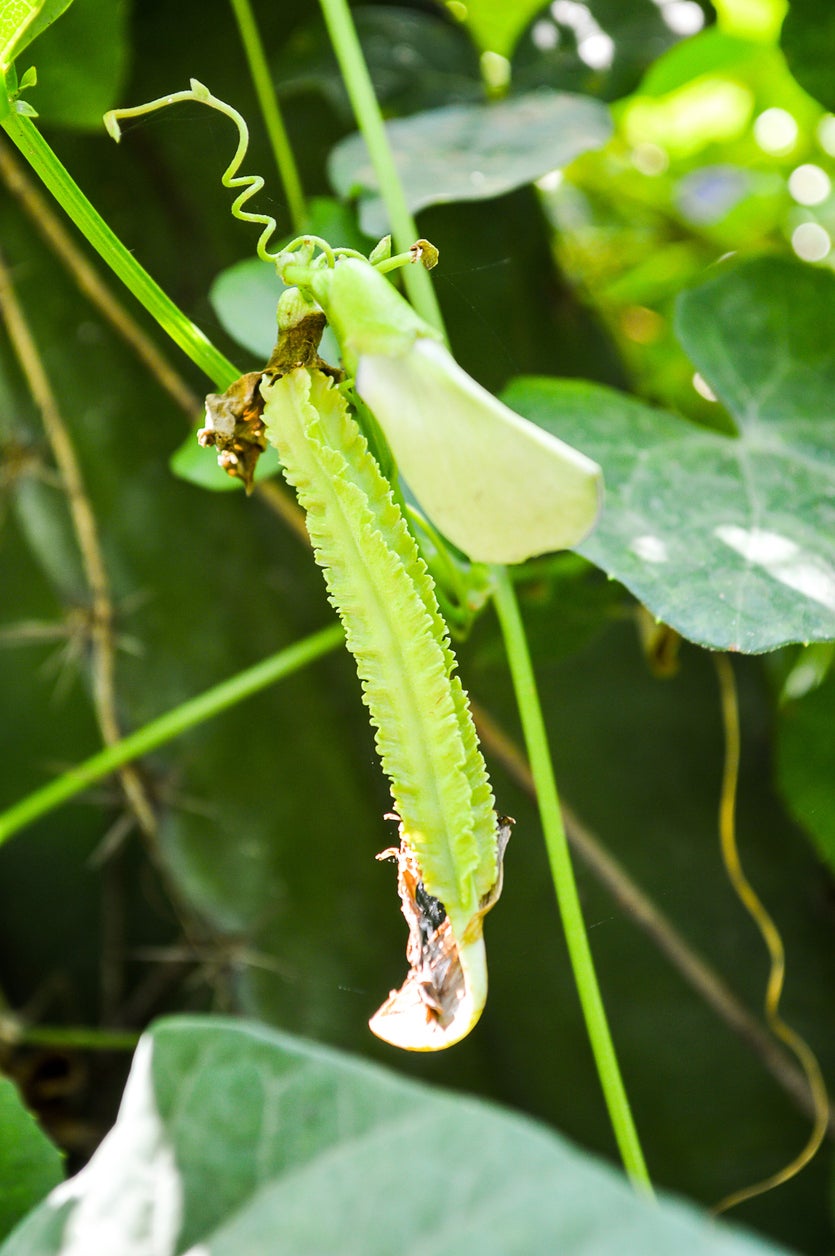Winged Bean Cultivation: What Are Winged Beans And Their Benefits

Known variously as goa bean and princess beans, Asian winged beans cultivation is common in Asia and to a much lesser extent here in the United States, specifically in southern Florida. What are winged beans and what are some winged bean benefits? Read on to learn more.
What are Winged Beans?
Growing winged beans are similar in growth habit as well as appearance to the garden variety pole bean. The plant has a vining habit with 3 to 6 inch (8-15 cm.) long leaves and producing 6 to 9 inch (15-23 cm.) pods. Four angled “wings” run lengthwise to the pods, hence the name. Seeds of the Asian winged bean look much like soybeans and are round and green. Some varieties of Asian winged bean are grown for and produce a large tuber that can be eaten either raw or cooked.
Winged Bean Benefits
This legume has been in the news of late due to its high protein content. Yam, potatoes, and other edible tuber roots have less than 7 percent protein. The Asian winged bean tuber has a whopping 20 percent of protein! Additionally, almost all parts of the Asian winged bean can be eaten. It is also an excellent soil nitrifying bean crop.
Winged Bean Cultivation
Sounds interesting, hmm? Now that you're intrigued, I bet you're wondering how to grow this nutritious legume. Basically, growing winged beans is a very similar process to growing bush snap beans. The Asian winged bean seeds are difficult to germinate and must be scarified first or soaked in water overnight prior to planting. They may also present a bit of a challenge in obtaining, although some seed catalogs do carry them as does the University of Hawaii at Manoa, College of Tropical Agriculture. Winged beans need short, cool days to promote blooming, however, they are frost sensitive. In south Florida they are grown in winter; farther north the shorter, yet, frost-free days of fall are more ideal. The plants grow best in hot, wet climates with 60 to 100 inches (153-254 cm.) of rain or irrigation per year and are, thus, not a good crop prospect for many regions of the United States. This bean grows well in most soils as long as they have good drainage. Work in compost and 8-8-8 fertilizer into the soil before sowing the seeds. Plant the seeds 1 inch (2.5 cm.) deep, 2 feet (61 cm.) apart in rows that are 4 feet (1 m.) apart. You can trellis the vines or not, but trellised vines produce more legumes. Winged beans can fix their own nitrogen when the bacterium Rhizobium is in the soil. Fertilize again once pods begin to develop. Harvest the pods when young and tender, around two weeks after pollination has occurred. Asian winged bean may be afflicted with mites, nematodes, and powdery mildew.
Gardening tips, videos, info and more delivered right to your inbox!
Sign up for the Gardening Know How newsletter today and receive a free copy of our e-book "How to Grow Delicious Tomatoes".

Amy Grant has been gardening for 30 years and writing for 15. A professional chef and caterer, Amy's area of expertise is culinary gardening.
-
 Looking For Plants To Give You The Soft And Fuzzies? Try These 5 Fuzzy Leaf Plant Options
Looking For Plants To Give You The Soft And Fuzzies? Try These 5 Fuzzy Leaf Plant OptionsLovers of texture, drama, silver foliage and tactile plants will adore these special sensory garden additions. These fuzzy leaf plant options will leave you all aglow
By Susan Albert
-
 Get Ready For A Summer Of Hummers! Grow These Full Sun Hummingbird Plants and Flowers
Get Ready For A Summer Of Hummers! Grow These Full Sun Hummingbird Plants and FlowersIf you’re lucky enough to enjoy a sunny backyard, make sure you are maxing out on your pollinator opportunities and grow these full sun hummingbird plants and flowers
By Tonya Barnett